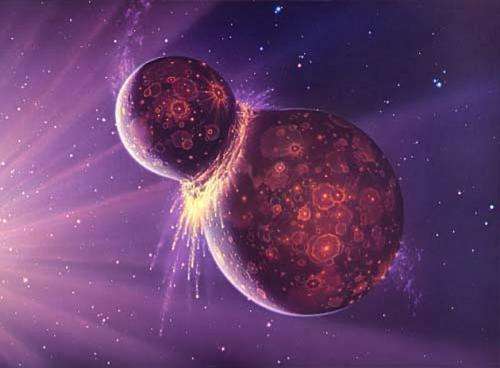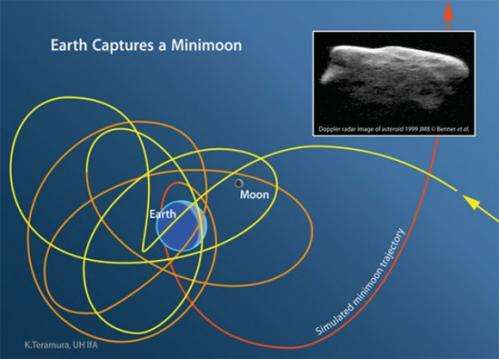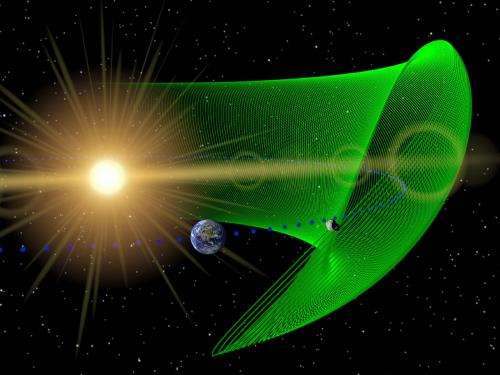Formation of the Moon
Look up into the night sky and count the moons. You can see only one moon, "the" Moon. But does the Earth have any other moons? Around the Solar System, multiple moons are the rule. Jupiter has 67 natural satellites, even Mars has two asteroid-like moons.
Could Earth have more than one?
Officially, the answer is no. The Earth has a single moon.
Today.
It's possible Earth had more than one moon in the past, millions or even billions of years ago. Strange terrain on the far side of the Moon could be explained by a second moon crashing into it, depositing a layer of material tens of kilometers deep.
Moons could come and go over the billions of years of the Earth's history.
For example, Mars has two Moons, but not for long. Phobos, the larger moon, is spiraling inward and expected to crash into the planet within the next 10 million years. And so, in the future, Mars will only have a single Moon, Deimos.
It's also possible that the Earth might capture a Moon in the future. Neptune's largest moon, Triton, orbits in the opposite direction from the rest of the moons around the planet. This suggests that Triton was actually a captured Kuiper Belt Object which strayed too close to the planet.
In fact, we did capture a 5-metre asteroid called 2006 RH120. It orbited the Earth four times during 2006/2007 before getting ejected again.
So we can assume events like this have happened in the past.
Additionally, we might have more moons, but they haven't been discovered yet because they're just too small. Researchers have calculated that there could be meter-sized asteroids in orbit around the Earth, remaining in orbit for hundreds of years before gravitational interactions push them out again.
And there are other objects that interact with Earth's orbit in strange ways. Scientists don't consider them moons, but they do stick around in our neighbourhood:
2006 RH120
Asteroid 3753 Cruithne is in an orbital resonance with the Earth. It has a highly eccentric orbit, but takes exactly one year to orbit the Sun. From our perspective, it follows a slow, horse-shoe shaped path across the sky. Since the discovery of Cruithne in 1986, several other resonant near-Earth objects have been discovered.
There's 2010 TK7, the Earth's only known Trojan asteroid. It leads the Earth in the exact same orbit around the Sun, in a gravitationally stable point in space.
2007 TK7
So, the answer… Earth only has a single Moon. Today. We might have had more moons in the past, and we might capture more in the future, but for right now… enjoy the one we've got.
Source: Universe Today


























